News
Big Horn City Part Two: Outlaws, Indians and Polo
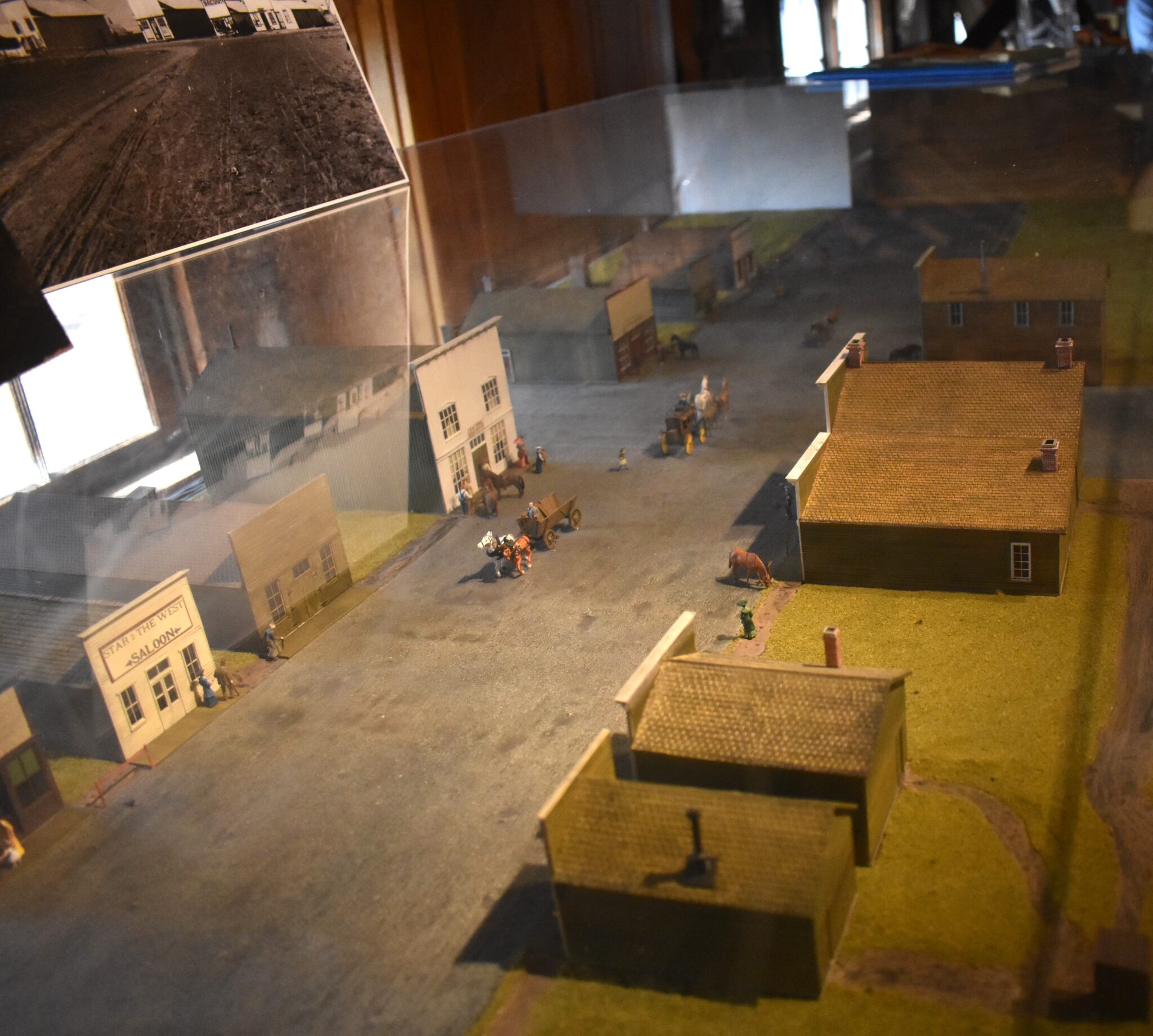
Big Horn City around 1885, Bozeman Trail Museum
The first permanent settler in the Big Horn Area, and in Sheridan County was Oliver P. Hanna. Today, there is a sundial and signage at the site where his cabin once stood.
Hanna had a colorful life. He knew the outlaws and Indians in the area. Once he came close to getting killed by the outlaw band that was active there during the 1870s.
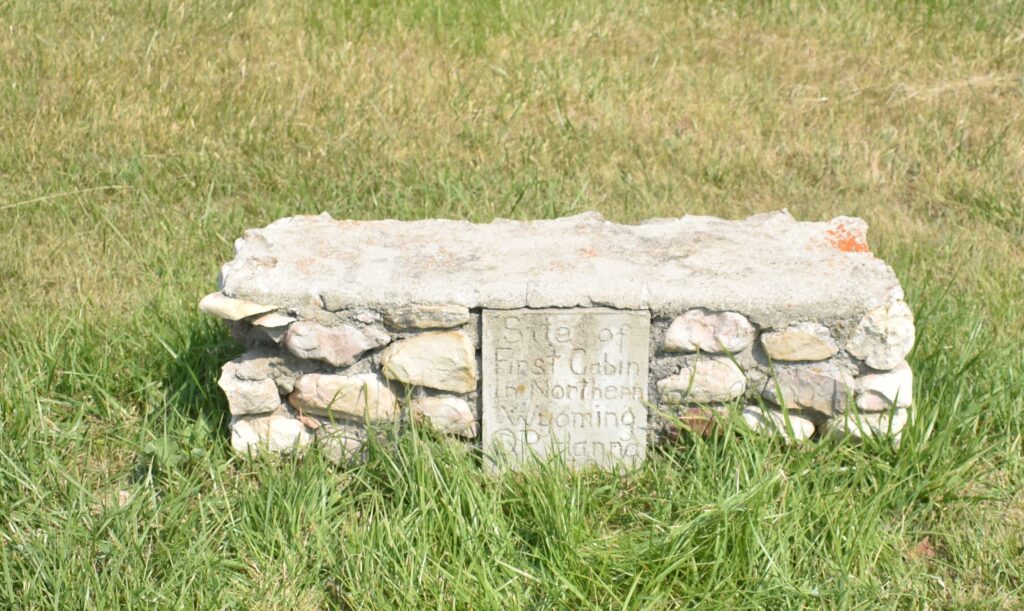
He tells about the experience in The Sheridan Post, October 23, 1921. A merchant by the name of A. Trabing, from Laramie City, put some log buildings on Crazy Woman and laid in a stock of general merchandise. Mr. Trabling had gone back to Laramie and left his manager in charge. One evening four or five men where in there talking, and someone stepped in the door and the command was heard, “Hands Up.”
Looking towards the door they found double barreled shotguns staring themin the face. They were being held up by a gang of road agents. The men in the store were all ordered to face a big pile of flour, guarded by one man with drawn gun, while the leaderof the gang (Said to be Jesse James) took over one thousand dollars worth of goods, bade the manager good night, told him he had very nice stock of goods and that he might count on them as some of his regular customers.
Two days after the robbery, I was hunting up Little Goose Creek, had wounded a deer and was trailing it through the brush, when I ran into a camp in the thickest timber. There was a gang of thieves looking over the goods stolen at Trabing’s store. I tried to step back without them seeing me, but they were on the alert, with guns in hand ready for defense.
As soon as I saw that they had seen me, I walked toward the camp looking as innocent as could be, saying “Hello, boys, you have a nice camp here; did you see anything of a deer going through here? I wounded one and trailed it into the brush here.” I was careful to keep my back to the pile of new clothes and groceries. It was a tough gang. They had ditched a train on the Union Pacific in the fall, for the purpose of robbing it, and a posse of men followed them, laid for them in the Red Canyon. The road agents killed two deputy sheriffs. The Union Pacific Company offered a big reward for their capture. They were known to be in the Big Horn country.
I had written to the Union Pacific Company and received a description of the whole party, consisting of seven, and was getting paid for reporting anything I could find out in regard to the gang. Had they examined my pockets I would not have lasted long, for in them was a description of the whole gang. I kept moving backward and played it so well I got out all right without them suspecting me, but they warned me to keep mum.
That night I went to Fort McKinney and sent a message to Laramie that I had found the road agents’ camp. I returned to my ranch and that night Big Nose George, one of the gang, rode up and wanted to know if I had any liniment, as his horse had fallen on him and hurt his knee. I gave him some liniment and he stayed over night. There was a three thousand dollar reward for him and I knew it; could have captured him easily but had no place to put him. After I sent the notice to Laramie the authorities sent out about twenty men. I They rode night and day, but when i they got to Little Goose the gang had flown. They got wind that the posse was coming. They went to the Yellowstone country.”
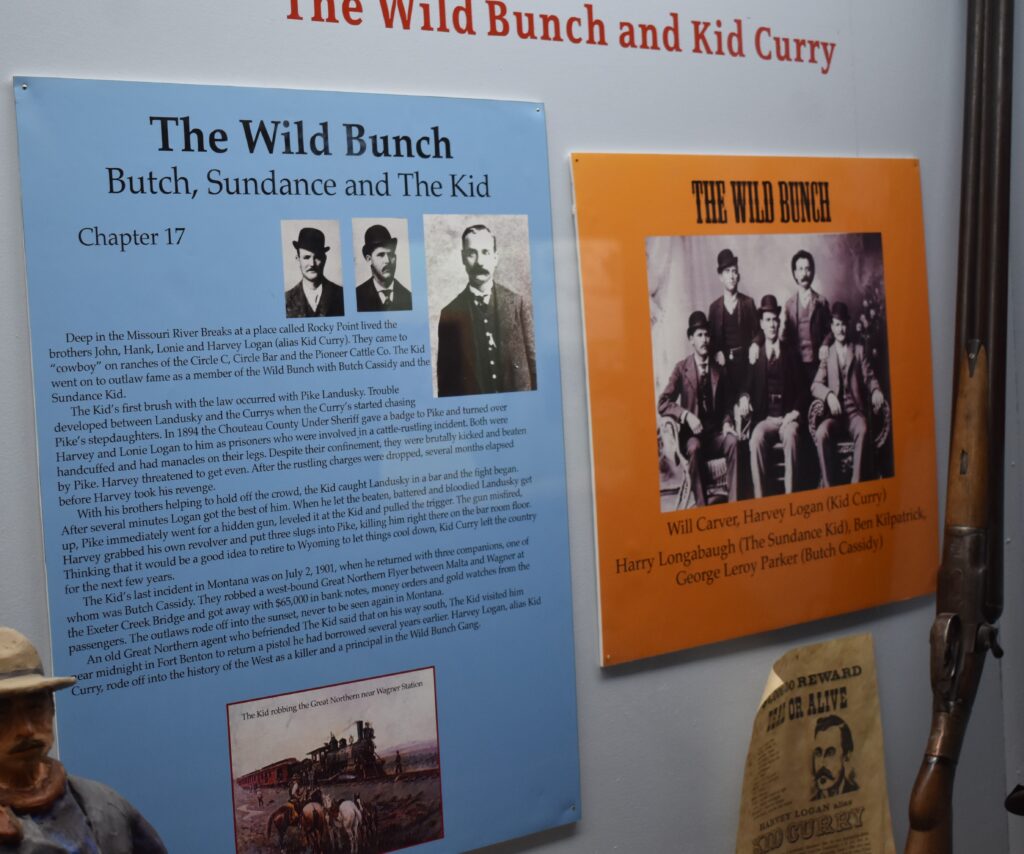
The infamous Butch Cassidy worked for the Hilman ranch near Big Horn in 1897. Fred Hilman was a boy at the time, but around 1910, after Cassidy was allegedly killed in Boliva, he returned to the Hilman Ranch to visit the family.
After the outlaw problem was fairly well settled, and the Indians were on the reservations, there is this story in the The Sheridan Enterprise, February 21, 1913 about Hanna possibly becoming the superintendent of the Crow Indian Reservation.
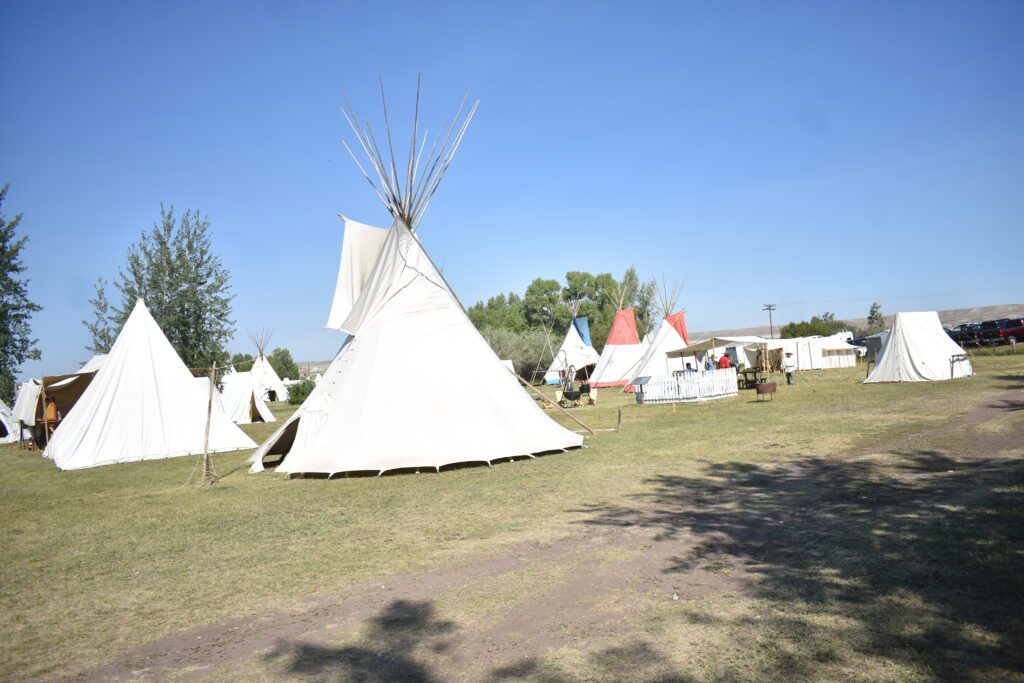
Oliver P. Hanna, a Sheridan county pioneer, ex-county treasurer and a candidate for the superintendency of the Crow Indian reservation on the request of the Indians themselves. Hanna, a rancher near Big Horn, and all around, substantial citizen of Wyoming, was in Billings the other day and the following story appeared in the Billings Gazette under the head, “Old Gold Tooth, Slxty-eighter. Strolls in on Politics Bent.”
A medium sized man with gray hair and a round face, very broad tan colored felt hat, a long cigar and a smile that displayed a long row of gold teeth, strolled into the Northern hotel yesterday and was greeted by “Hello, Gold Tooth.” “Lord, haven’t seen you since ’76.” “What is this I hear about your wanting to boss the Crow Indians?” “Hi, old timer. Strolled off your range a bit, ain’t yer?”
He was the center of a crowd that disappeared through the buffet door, leaving a smoky trail in their wake. “Who’s the guy?” inquired the newspaper man. “Don’t you know him?” asked the clerk.
“Well, he’s the man who hauled the first plow 350 – miles into Sheridan. Wyoming, and plowed the first furrow. That’s who he is “Nosed around a bit in this valley when Livingston was ‘Beason’s Landing’ — name in 1868, 17 years old then. He’s the guy who piloted John P. Finnerty to Custer’s Battlefield a week after the disaster and so gave to history posterity and the Chicago Times, Finnerty’s story of the massacre.

“He helped Hayden lay out Yellowstone Park— sat beside ‘Old Faithful when she didn’t have a name— served as a scout for General Crook when he was after the Sioux, lived in this country ever since— -lives in Sheridan now – Don’t know that guy? Well, I’m surprised. Every Crow Indian knows him. He’s Gold Tooth and he’s here in Billings smoothing up Democratic politicians a bit on the Crow Indian agency job.
His petitions have been signed by hundreds of Indians on the reserve and they say he must be their next agent. Never heard him tell about the reservation? Well say, you ought to hear him. He has the Indian problem down some. Talks of the reservation familiarity— has been over every foot of it — thinks the agency job should belong to someone who has been a ranch foreman, believes the reservation is one great ranch and should be overseen like any other ranch. And incidentally the Indians want him bad and they have already declared they will make it hot for any other man who might get the job, and believe me, they can sure do it.”
By this time the clerk was out of breath “But what’s his name?” asked the newspaper man. The clerk sighed deeply – “Hanna. Hanna, O. P. Hanna. You’ve heard of Hanna.” “Uh-huh, sure,” said the newspaperman in a knowing way and went out.
Ten years later, after the country had settled down and more settlers were becoming permanent residents, Sheridan county was formed on March 9, 1888, from a part of Johnson County. There was a fight over which town, Big Horn or Dayton or Sheridan, would be the county seat.
In an article in The Big Horn Sentinel (Buffalo), in February, 1888, it talks about which town might become the county seat of the new county.
Sheridan’s situation on the County Seat. Admit for argument’s sake that the bill proposing the creation of the county of Sheridan now before the legislature should it become a law, what assurance have the division schemers of Sheridan that the town located at the forks of the Goose Creeks will be voted as the county seat of the new county. Let us look into the situation as it would stand with the organization of Sheridan County and the votes to be cast in the matter of deciding the county seat location.
It is natural that the voters of Piney and lower Clear Creek precincts would vole unanimously in favor of Big Horn to be the county seat, should the town aspire for the honors, on account of that town being more convenient than Sheridan. The votes of these two precincts, according to their present population, would be upwards of about two hundred in number. Then there is the settlement on upper Prairie Dog and its tributaries which would also pull in favor of Big Horn, and the Big Horn precinct and the citizens along the Big Horn Mountains which would be naturally be unanimous in favor of Big Horn as the county seat. Altogether the outlook is not so favorable for Sheridan as it might be, and even should the bill to create the county of Sheridan become a law, it lies within the power of the people of Big Horn to work up a scheme by which the Sheridanites would find would an interesting contest over the question of the county seat location.
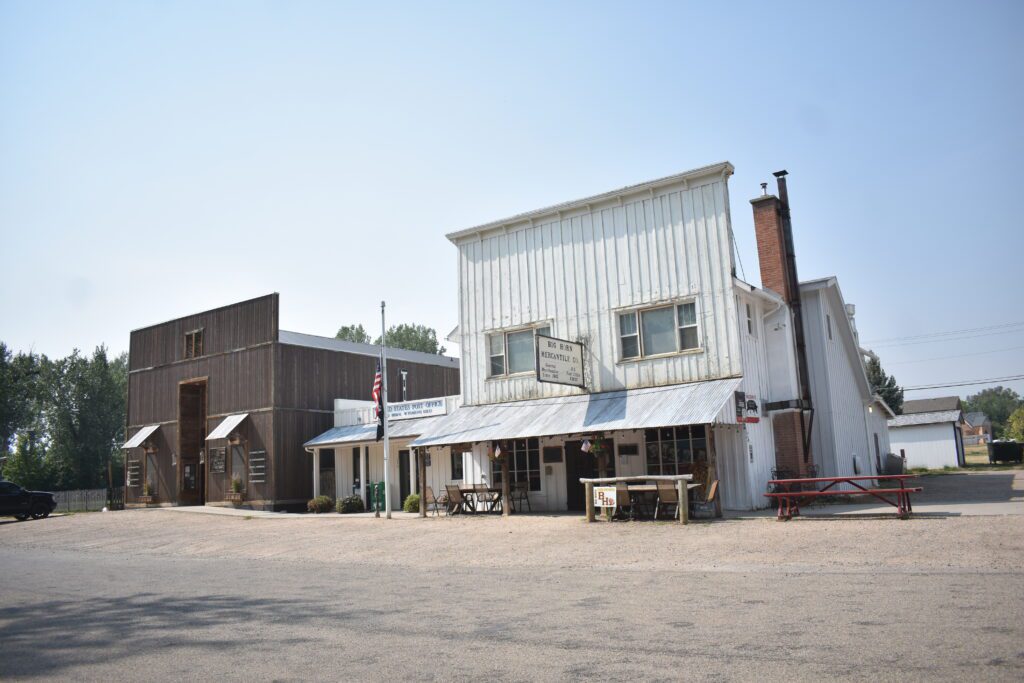
And from The Enterprise, April 28, 1888
Sheridan, Big Horn and Dayton have pulled off their coats and gone into the county seat fight. The indications are that Sheridan will have walk away.
Big Horn is also know for polo. Polo was established in the late 1800s by English rancher Oliver Wallop and Scottish rancher Malcolm Moncreiffe, who brought their thoroughbred horses and the game of polo to Big Horn.

In The Cheyenne Daily Sun, July 12, 1893, it talks about a polo game in Sheridan.
The great event of the Fourth of July celebration at Sheridan was the polo game. The Enterprise thus describes the second inning:
“The spectators began to understand the maneuvering, and grew excited as the white sphere neared the goal of the Sheridan boys. The players struck and yelled, the horses rocked forward and backward on their feet to escape blows amid at the sphere and amid the confusion the sphere was pounded across the field and through the two posts of the Sheridan team at one and the same time.
Then the yelling was deafening, and the Beckton men rode over to the judges stand and explained to each other how it happened. Everyone said Bob Brown did it.” The city team was victorious and got $200. The horses did all the work and got – oats.
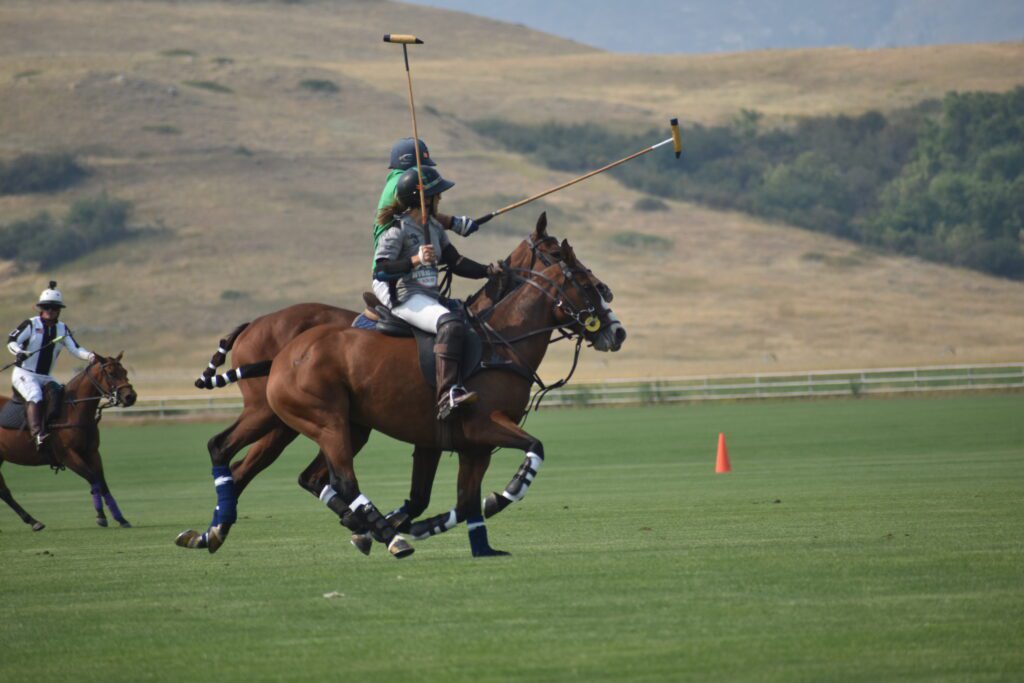
Today, historic Big Horn is a community of around 500 people, with three schools, an elementary, middle and high school; several high school and junior high sports teams; restaurants, bars, and a small museum. Polo is still played during the summer months, wrapping up the season with Don King Days over Labor Day weekend. The Big Horn Polo Club and the Flying H Polo club have games that are open to the public.
Big Horn, Wyoming, from outlaws and Indian troubles to a thriving, quiet community.


mike morton
September 24, 2022 at 5:03 pm
Big Horn Polo club established in 1893,Wyo Room,Fulmer Public Library
Ira roadifer
September 25, 2022 at 4:25 pm
Thank you. Glad you are keeping me up on the history in our surroundings area. Very good article.